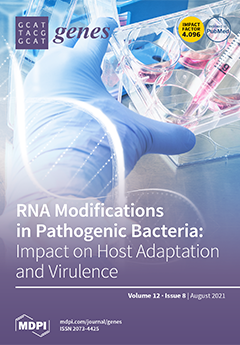Exogenous siRNAs are commonly used to regulate endogenous gene expression levels for gene function analysis, genotype–phenotype association studies and for gene therapy. Exogenous siRNAs can target mRNAs within the cytosol as well as nascent RNA transcripts within the nucleus, thus complicating siRNA targeting specificity. To highlight challenges in achieving siRNA target specificity, we targeted an overlapping gene set that we found associated with a familial form of multiple synostosis syndrome type 4 (SYSN4). In the affected family, we found that a previously unknown non-coding gene
TOSPEAK/C8orf37AS1 was disrupted and the adjacent gene
GDF6 was downregulated. Moreover, a conserved long-range enhancer for
GDF6 was found located within
TOSPEAK which in turn overlapped another gene which we named
SMALLTALK/C8orf37. In fibroblast cell lines,
SMALLTALK is transcribed at much higher levels in the opposite (convergent) direction to
TOSPEAK. siRNA targeting of
SMALLTALK resulted in post transcriptional gene silencing (PTGS/RNAi) of
SMALLTALK that peaked at 72 h together with a rapid early increase in the level of both
TOSPEAK and
GDF6 that peaked and waned after 24 h. These findings indicated the following sequence of events: Firstly, the siRNA designed to target
SMALLTALK mRNA for RNAi in the cytosol had also caused an early and transient transcriptional interference of
SMALLTALK in the nucleus; Secondly, the resulting interference of
SMALLTALK transcription increased the transcription of
TOSPEAK; Thirdly, the increased transcription of
TOSPEAK increased the transcription of
GDF6. These findings have implications for the design and application of RNA and DNA targeting technologies including siRNA and CRISPR. For example, we used siRNA targeting of
SMALLTALK to successfully restore
GDF6 levels in the gene therapy of SYNS4 family fibroblasts in culture. To confidently apply gene targeting technologies, it is important to first determine the transcriptional interference effects of the targeting reagent and the targeted gene.
Full article






